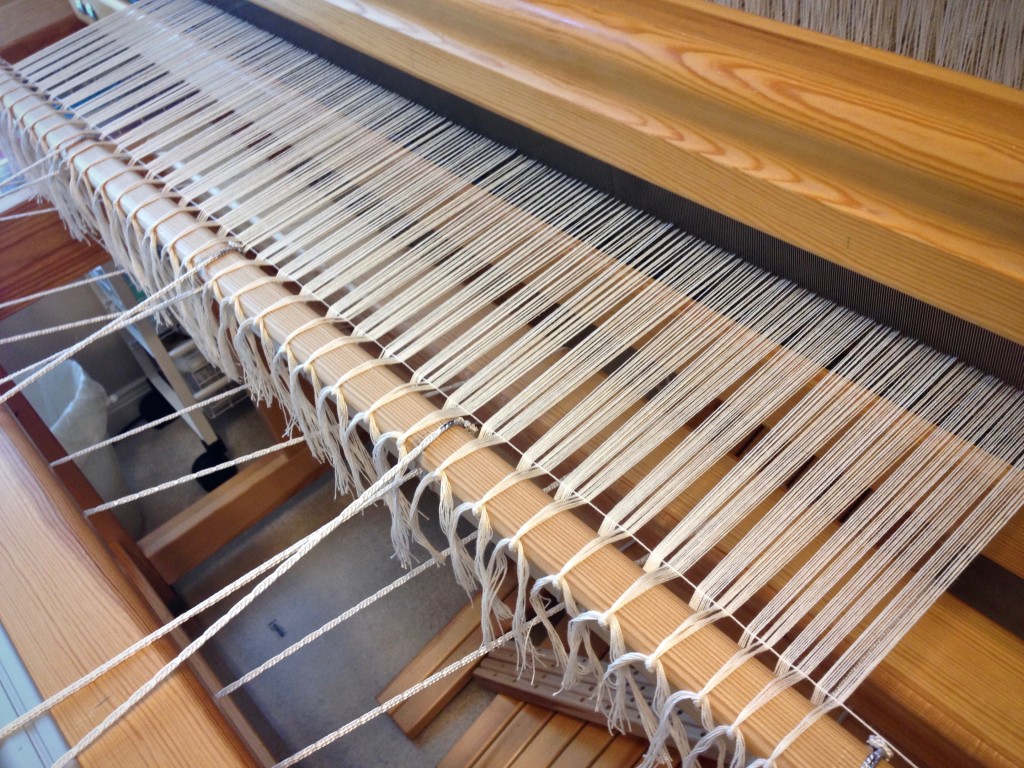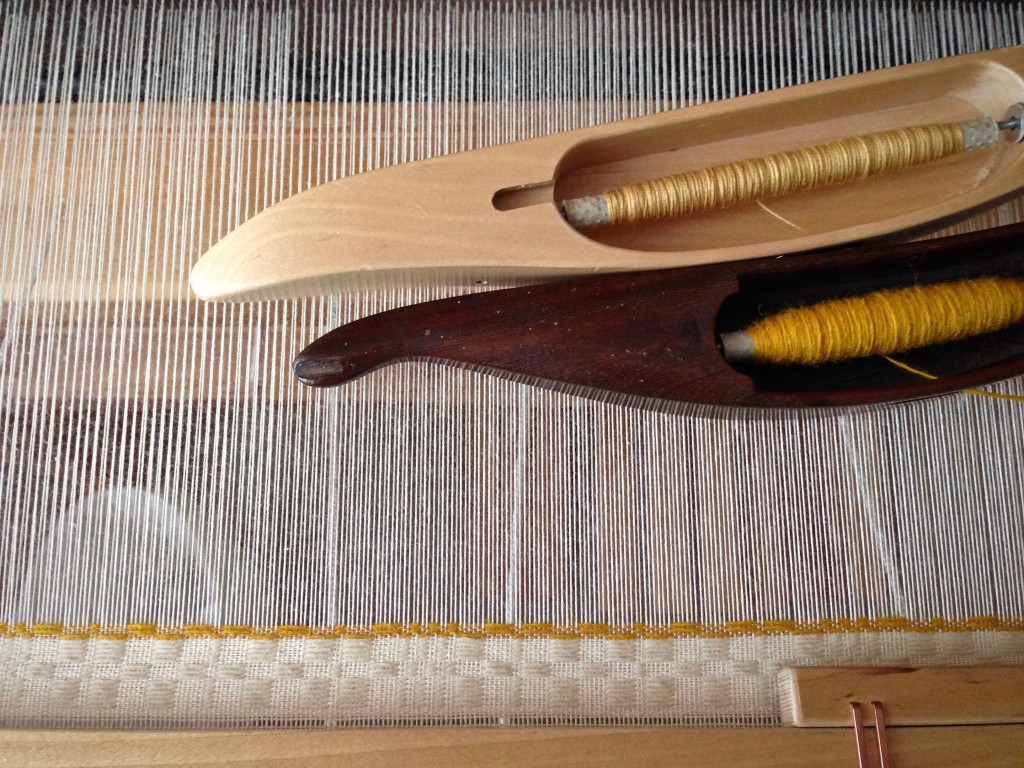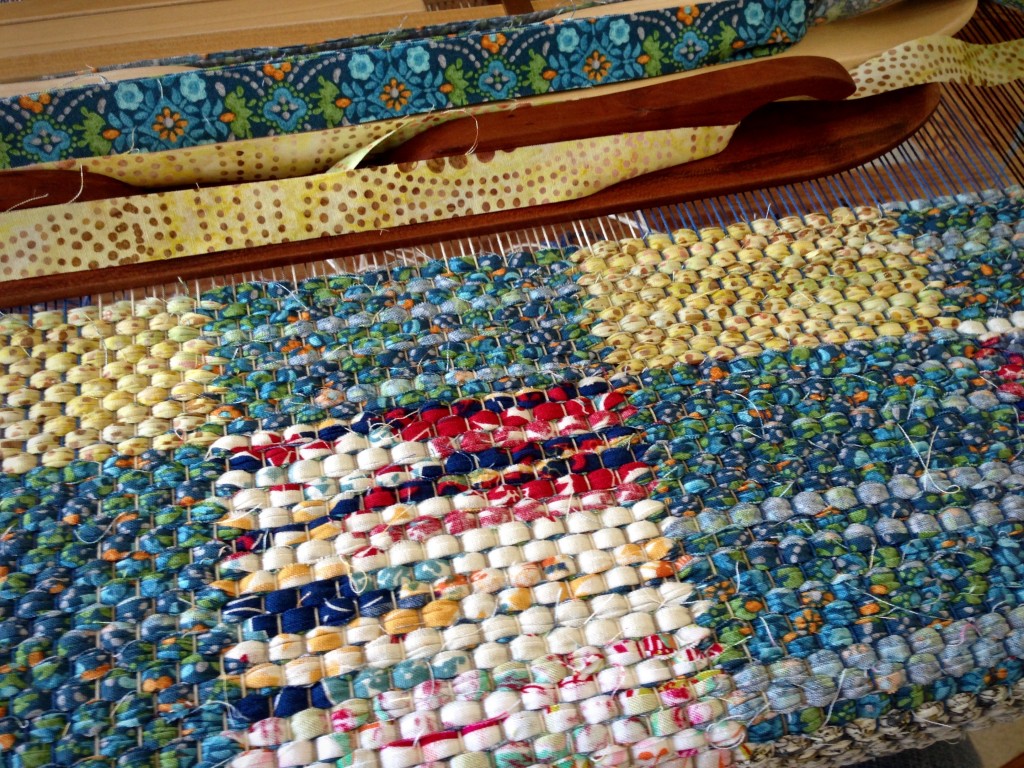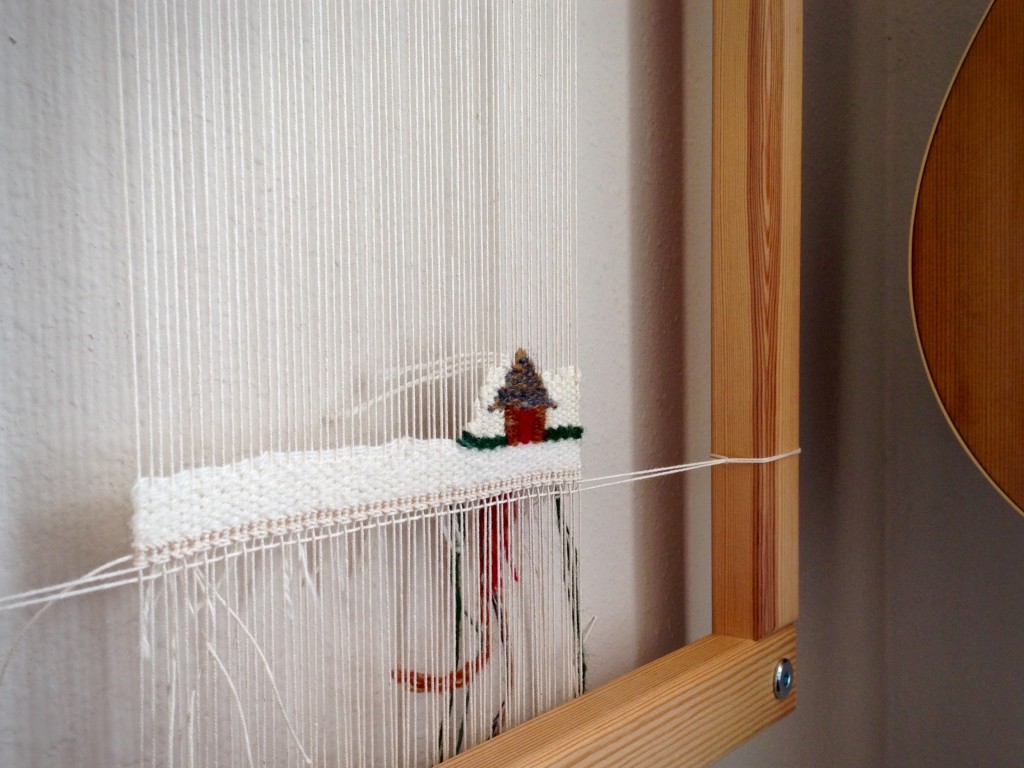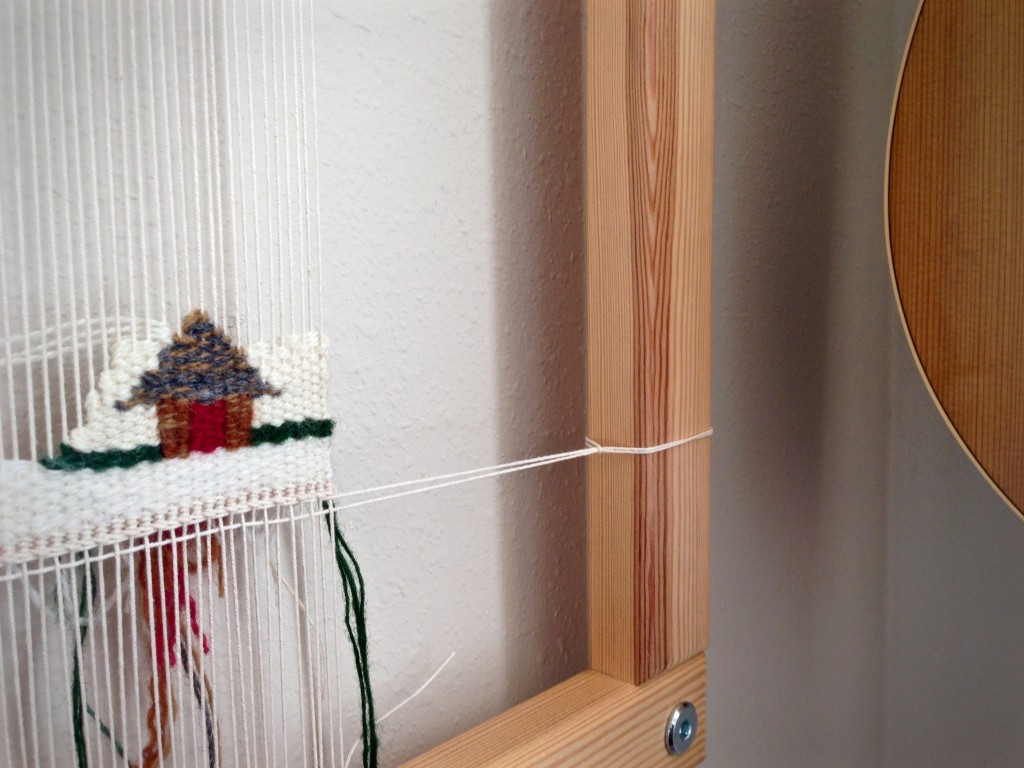I think of monksbelt as a grid. The grid, created in the threading, has blocks that I get to fill in with color. The only thing I have to do is follow the treadling draft and keep the two shuttles in their proper order. The rest is play. It is amazing what you can do with nine pattern colors, several background colors, and a simple grid.
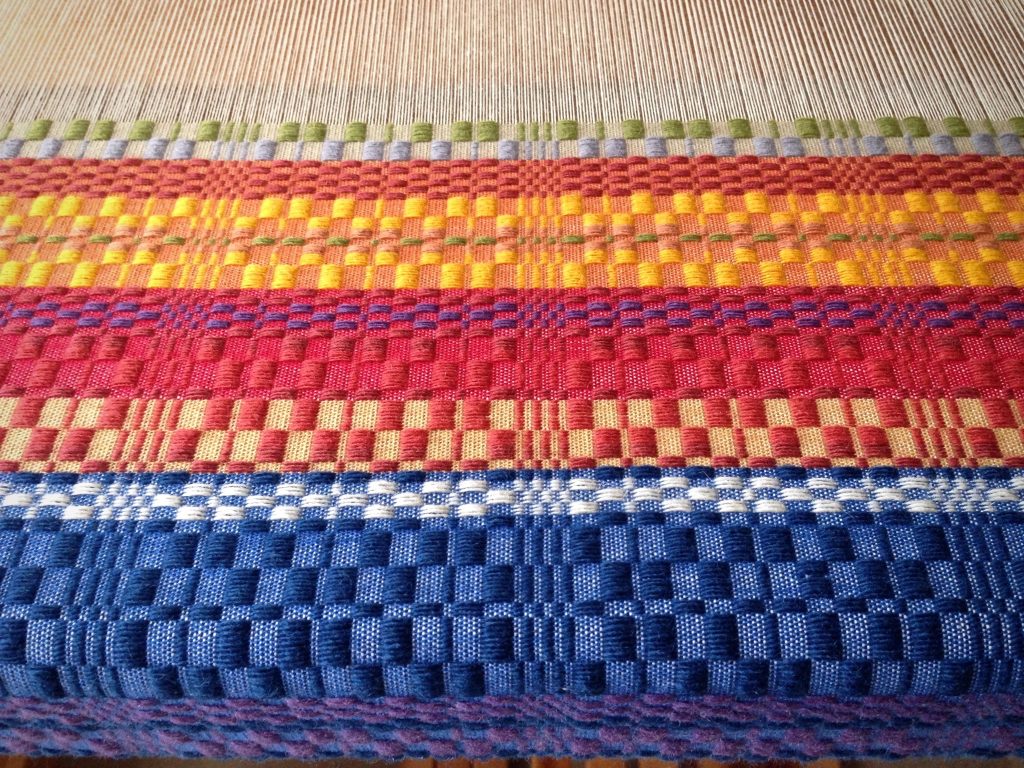
A grid is a framework, a structure, that gives boundaries to the space. We need a grid for coloring our decisions, for outlining our beliefs, and for drawing our convictions. Our hearts can be fooled, so don’t trust your heart to tell you what is right. What seems right may be wrong. We need a higher standard for forming the patterns of our life. It makes sense to stay with the grid that the Grand Weaver, our Maker, planned when he dressed the loom. Then, filling in the blocks with color is pure joy.
May you find colors that delight you.
With joy,
Karen

